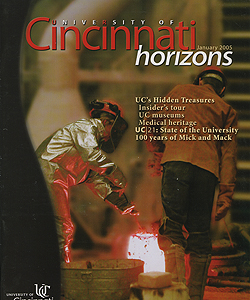UC's most beloved statuary celebrate its first 100 years on post at McMicken Hall.
by Kevin Grace, MA (A&S) '77
The leonine guardians at the entrance of McMicken Hall have been both physical and cultural symbols of the University of Cincinnati for 100 years, a full century of watching over the Clifton Avenue side of campus. But which one is which?

 Past Issues
Past Issues
